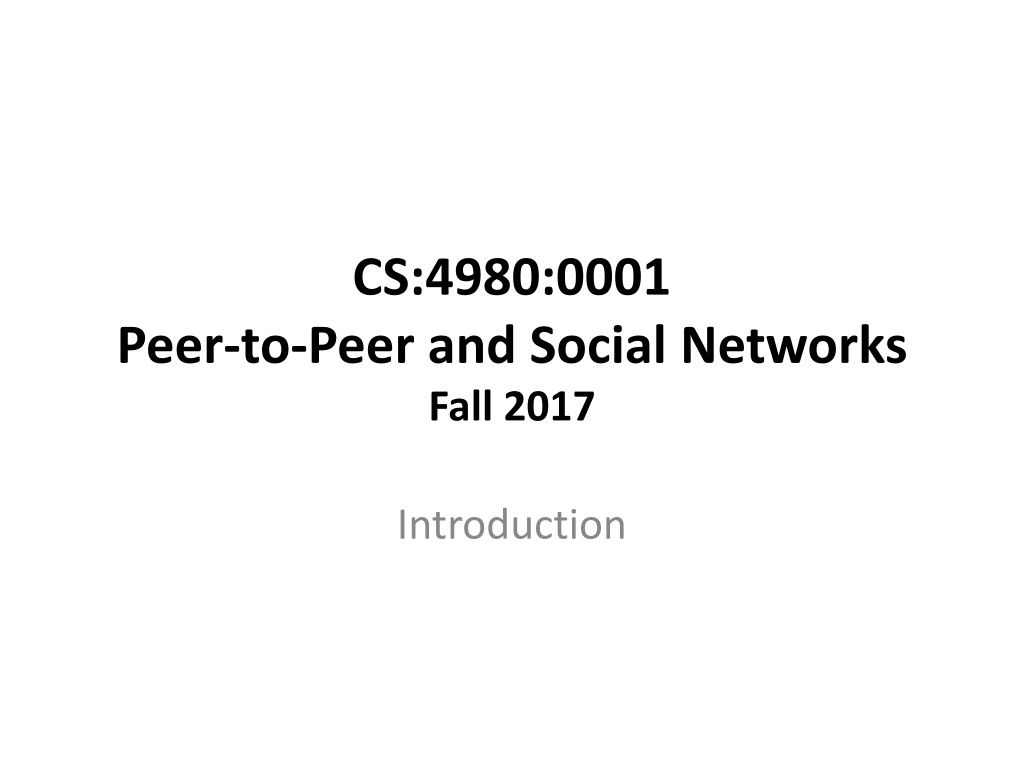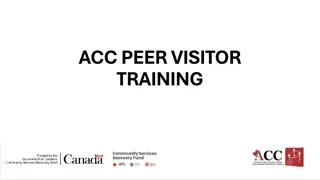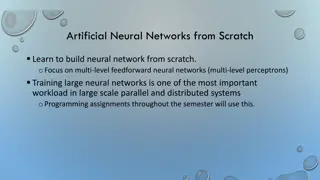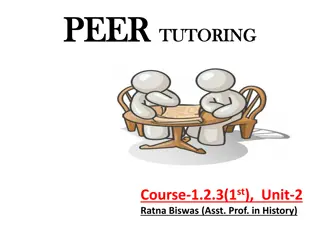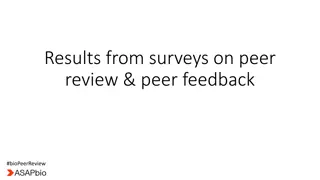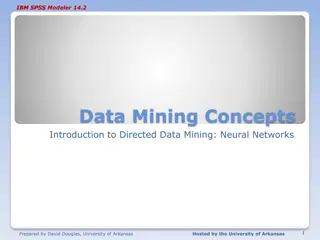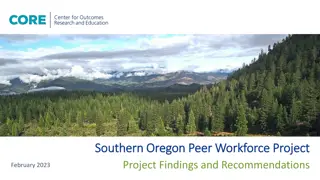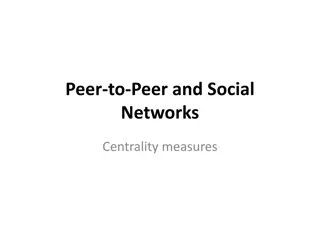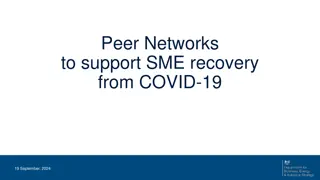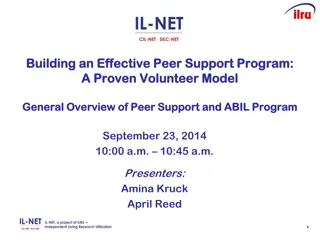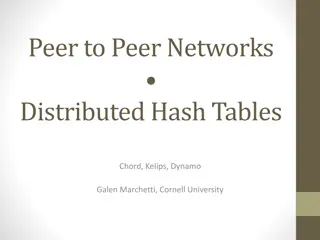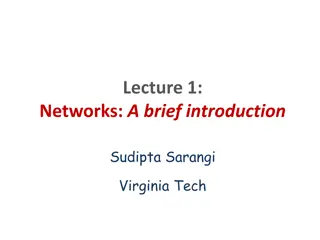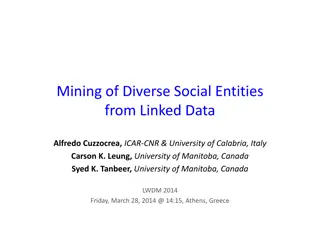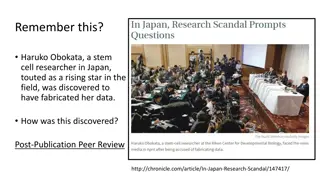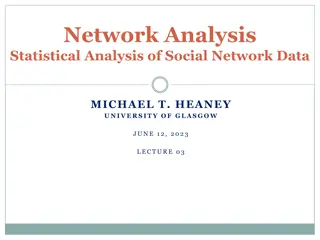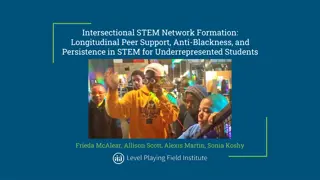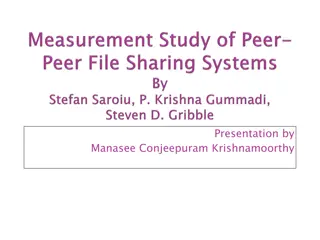Peer-to-Peer Networks & Social Structures
Dive into the world of Peer-to-Peer (P2P) networks and social structures, exploring the decentralized nature of resource sharing, content distribution, and interactions facilitated by these networks. Understand the significance of P2P networks in modern technology and social platforms, examining their past uses like file sharing and their current applications in services like Uber, Lyft, and blockchain technology. Explore the concept of social networks as interconnected actors with dyadic ties, represented abstractly in graph form, reflecting relationships in various contexts from biological networks to modern social media platforms.
Download Presentation

Please find below an Image/Link to download the presentation.
The content on the website is provided AS IS for your information and personal use only. It may not be sold, licensed, or shared on other websites without obtaining consent from the author.If you encounter any issues during the download, it is possible that the publisher has removed the file from their server.
You are allowed to download the files provided on this website for personal or commercial use, subject to the condition that they are used lawfully. All files are the property of their respective owners.
The content on the website is provided AS IS for your information and personal use only. It may not be sold, licensed, or shared on other websites without obtaining consent from the author.
E N D
Presentation Transcript
CS:4980:0001 Peer-to-Peer and Social Networks Fall 2017 Introduction
What is a P2P network Uses the vast resource of the machines at the edge of the Internet to build an overlay network that allows resource sharing and content delivery without any central authority. Client-Server vs. Peer-to-peer. A peer is both a client and a server. Control is decentralized.
Why study P2P Past uses. Sharing (*often pirated*) music or movie on the Internet Modern uses. P2P TV, VOIP Telephony (Skype) File sharing Digital currency - blockchain P2P Services (Uber, Lyft, AirBnB) Content distribution (Twitter and Facebook have their (BitTorrent-like) content distribution mechanism).
Twitter Code distribution in Twitter
Social Network [Wikipedia definition] A social network is a social structure made up of a set of actors (such as individuals or organizations) and the dyadic ties between these actors. The social network perspective provides a clear way of analyzing the structure of whole social entities.
Social networks Abstract representation is a graph G=(V,E) This graph can represent various things. For example, Each node is a friend and each edge is a friendship relation Each node is an airport and each edge is an air route Each node is power generating station, and each edge is a high voltage link connecting a pair of generating stations
Example of networks Biological networks Protein protein interactions networks Predator-prey networks Information networks WWW graphs P2P networks Co-authorship network Citations network Technological networks Power grid Telephone network Internet Modern social networks Facebook Twitter LinkedIn Classical Social networks Intermarriage network among ruling families in Florence Friendship among school children Other useful networks Transportation networks
Example of networks Food web at Little Rock Lake (Credit: Mark Newman) The Internet Source: http://www.cheswick.com/ches/map/gallery/index.html
Social networks Social networks existed from the dawn of civilization, much before Facebook or Twitter were created . Facebook or Twitter only established an electronic platform to facilitate socialization. In contrast, peer-to-peer networks are a much more recent invention primarily aimed at content sharing and content distribution, often without the assistance of a central server.
Six degrees of separation Six Degrees of Separation is a 1993 American film. (1929) Frigyes Karinthy, a novelist in of Budapest wrote a book that contained a story called Chains. A character in this story suggested that he could link to any other inhabitant in the world through a chain of five acquaintances. (1967) Stanley Milgram conducted an experiment that validated this.
Milgrams experiment Milgram arranged to send 160 envelopes to a group of randomly selected people from Wichita, Kansas and Omaha, Nebraska. Each envelope contained the following: 1. A document with the logo of Harvard on it. 2. Name, address and occupation (stock broker) of Milgram's friend in Boston, MA. 3. Instructions to get the package to the target person following specific rules: each person could only send the package to an acquaintance defined as being on "first name basis".
Milgrams experiment Taken from Kleinberg s book 64 of the 160 envelopes reached the target person. The median length of the chain was six
Shortcomings of Milgrams experiment There were several shortcomings of this experiment. 1. Many envelopes did not reach the target person. 2. The sample size were too small 3. There was not much flexibility in the choice of the source and the target Should we still believe these results?
Facebook experiment Karl Bunyan (2009) Ran experiments on the Facebook platform with an application named "Six Degrees , and calculated the degrees of separation between different pairs of users. Facebook had over 5.8 million users as seen from the group's page. The average separation between all pairs users of the application was 5.73 and the maximum degree of separation was found to be 12. On Twitter, the average separation is close to 5.
Erds number Erd sNumber (Erd s) = 0 If X is the coauthor of at least one paper with a person whose Erd s number is n, then Erd s number of X = n+1. These numbers are surprisingly small. Albert Einstein s Erd s Number is 2 Sriram Pemmaraju sErd s Number is 2 Sukumar Ghosh sErd s Number is 3 Co-authorship network
Kevin Bacon number Refers to distance measures in the co-actor network (available from Internet Movie Database IMDb) Similar to Erd s number but applies to movie actors. Actor Kevin Bacon s number is 0 by definition. Anyone who has acted in a film with an actor whose Kevin Bacon number is has a Kevin Bacon number of n (n+1) IMDb database has more than 200,000 actors and actresses, but the Kevin Bacon numbers for them are surprisingly small.
Important questions How does a social network evolve? What are their structural properties? What properties are relevant or worth studying? Why are the degrees of separation so small? How can we use some of these structural properties? What are some of the important issues in social networks?
